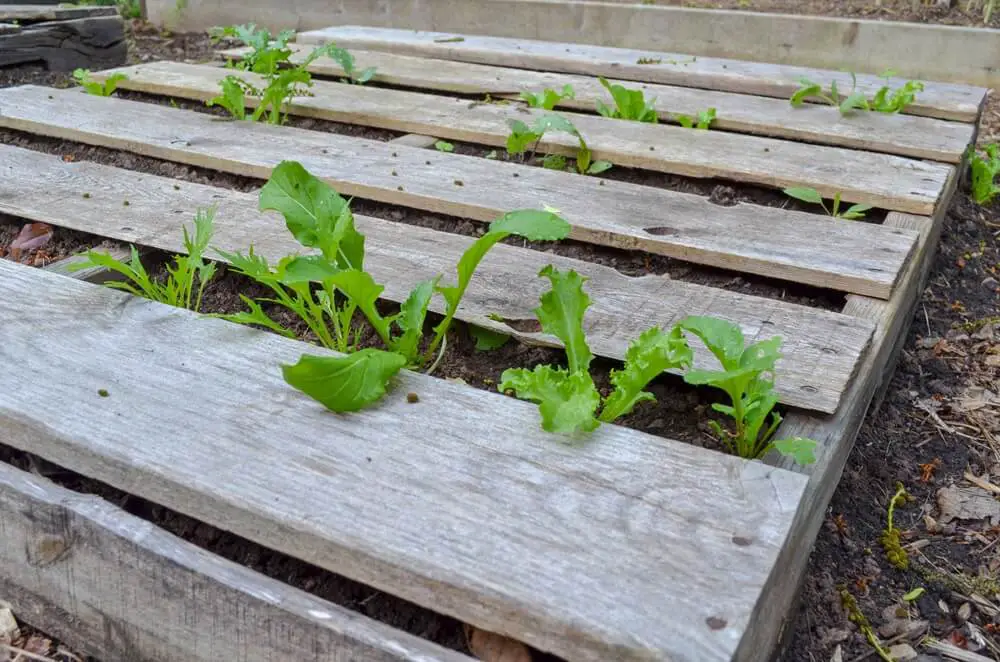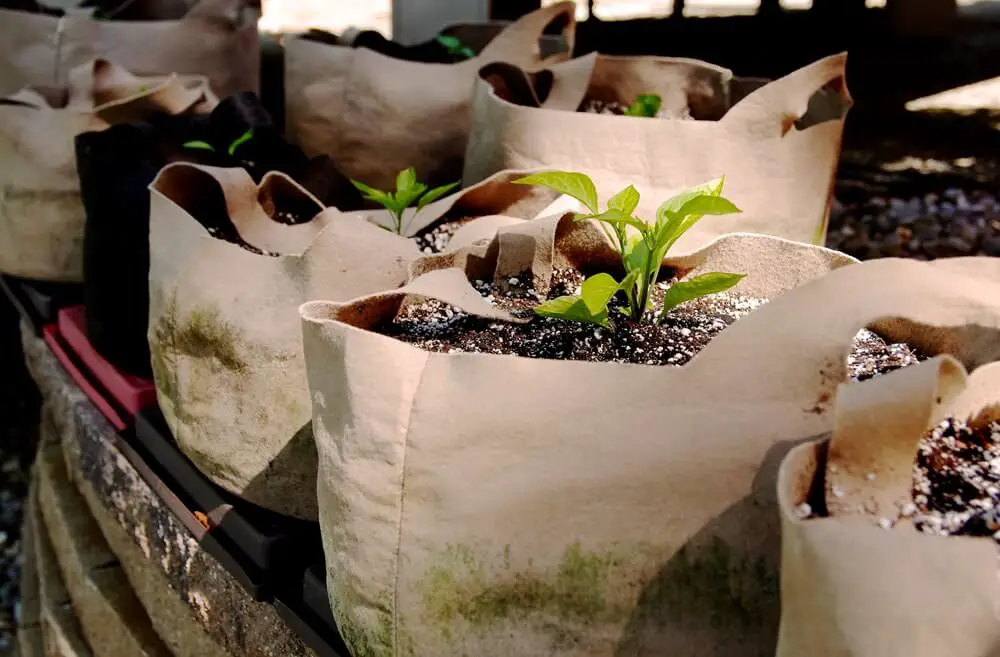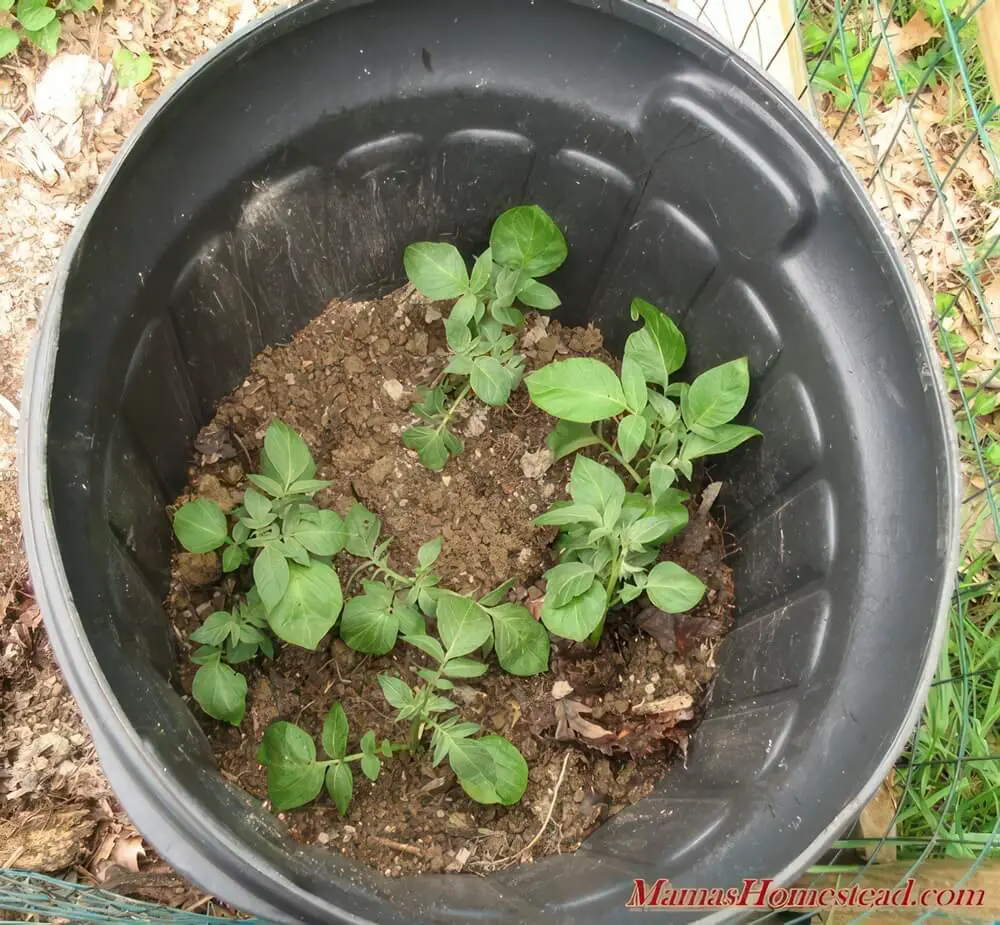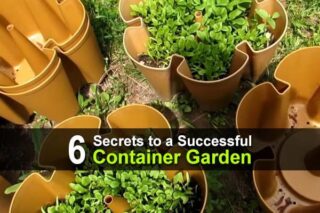Estimated reading time: 9 minutes
For gardeners with poor soil, hungry wildlife, poor sunlight, or all of the above, container gardening provides several answers. You can manipulate the soil in your container to be just what you need for the type of plants you are growing.
Container gardens can be moved anywhere you like. They can be transferred to follow seasonal sunlight changes, and they can be placed in an enclosure, on a porch, or a protected location to deal with hungry pests like rabbit, deer, and squirrels.
Want to save this post for later? Click Here to Pin It On Pinterest!
Hay Bales

Hay bales are one of the more interesting “containers” because they break down as the growing season goes on. They are the only container on the list that will feed your garden as it contains your garden. That’s pretty cool!
To create a haybale container you need 4 haybales, and you simply arrange them so there is a rectangular space between them all. Sort of like you are building a raised bed except instead of lumber, you are using haybales.
Fill that section with fertile soil and grow whatever you like in there.
You can also cut a section out of the center of a single haybale and grow inside the individual hay bale itself. If you combine methods, then you can grow things like tomatoes in the large growing space in the center while growing lettuces and herbs in the cutout sections of each individual haybale.
More Info: How to Grow Food in Straw Bales
Pallet Growing

In one of its early iterations, I had a garden that was made up of pallets. The pallets were not disassembled or built into anything. I just laid them on level ground and filled them with nutrient-rich growing soil.
I smoothed it out over the top removing the excess from the pallet wood on top.
What I had were mini raised beds that had rows built into them. I really like this design. They did very well with things like lettuce, squashes, and herbs.
Since I did not protect them, our dogs stepped and laid on them while some of the plants were young and it affected the yields. Other than that, these were a great out of the ordinary “container” for growing.
More Info: How to Grow a Pallet Garden
Grow Bags

About 7 years ago, my father-in-law gave me a dozen or so grow bags, and I think they are one of the best containers to grow in. They are incredibly versatile, they drain well, and they have handles ,which makes them super easy to use.
I have seen people have tremendous success with things like sweet potatoes, though I have only grown things like pole beans and squash in them.
If you haven’t tried grow bags as part of your container garden, you should consider them for your next garden. I know people that grow almost everything in these bags. Keep em moist and you will have success.
More Info: How To Use Grow Bags
Trash Can Potatoes

When my son was very little, we drilled holes into a trash can and filled it about halfway with soil and planted potatoes. Then we let them sprout and covered them with more soil just to the tops of the plant. We did this over and over till the trash can was filled with growing soil.
After the potatoes grew to maturity and the mature plants died off, we tipped the can over and dug through all the dirt for our harvest. It was a cool exercise. We had a decent yield. There are some things we could have done differently, but the container itself worked out really well.
A simple trash can with drainage provides you great room for larger roots to grow. It also holds a lot of soil.
More Info: How to Grow Potatoes in a Trash Can
Rain Gutter Strawberries

Do you have a tall fence? What about a greenhouse or an attached grow room? I have seen rain gutters employed for a number of uses. One of the very best was for growing strawberries inside of a greenhouse.
Rain gutters are a great option for plants that have shallow root systems like lettuces and leafy herbs. They are not great for root vegetables.
More Info: Growing Strawberries in Gutters
Cinderblock Raised Bed

A raised bed made of cinderblocks is one way that you can use cinderblocks. However, the coolest part about each cinderblock is that there are two small growing compartments in each. These two holes can be filled with soil, and you can grow things like leafy greens, herbs, lettuces, and bush beans.
Some people have mentioned to me that these blocks can leech chemicals. I never worried much about this. If you aren’t growing food, then you are already eating food that is covered in a variety of chemicals.
More Info: Growing Plants in Cinder Block Holes
Hanging Planters

We all see hanging planters. They are great little containers for growing. The biggest struggle with the hanging planter is that you must keep them watered. In cool conditions, they are just hanging there and drying out quickly.
Even a couple days without watering can be detrimental to whatever you are growing in your hanging planter. So, keep these things saturated if you plan to use them.
More Info: How to Start a Hanging Vegetable Garden
Five Gallon Buckets

Any prepper knows that the 5-gallon bucket is one of the most versatile tools in the tool kit. You can do almost anything with a 5-gallon bucket. When it comes to using them as a growing container they excel in a number of different ways.
You can convert a 5-gallon bucket into a small hydroponics system. You can transform a 5-gallon bucket into an aero garden that sprays nutrient-laced water on the roots of your plants inside the bucket while the tops of the plants grow above the bucket.
Of course, you can just punch some holes in the bottom and fill it with soil to grow traditionally.
More Info: Growing Food in Buckets – A Step by Step Guide
Rain Barrel Container Garden

Those 55-gallon rain barrels can do more for you than just gather and hold water. They are capable of growing food, too. By cycling the water with a water pump and adding nutrients, you can create a hydroponics system.
If you are hanging on to too many rain barrels, then you can cut the tops off them and create a deep growing pod for things like root vegetables or vegetables like tomatoes with deep taproots. You can also halve the rain barrels or split them right down the middle to create two growing containers from one barrel.
More Info: Container Gardening With Rain Barrels
Old Cooler Garden

One of the worst parts of a container garden is soil drying out. When you plant in the ground, the moisture is more spread out and the ground is also insulated. Your above-ground containers heat up fast and dry out.
The benefits of using an old cooler as a container is the added insulation. It will keep your dirt moist because it helps regulate the temperature. Don’t forget about drainage on this container.
More Info: DIY Repurposed Cooler Planter
Conclusion
For people in urban settings, rooftop gardens, limited spaces, or even indoor growing, container gardens can be an answer when growing your own food seems impossible. Container growing is also a great growing method to explore for adding options to your traditional garden.
You can have just as much success, sometimes even more, in container gardening as you do when growing directly in the ground.
Don’t just stop with the ideas I have presented. You can grow in almost anything. I have seen people grow flowers in old boots! Not a very efficient growing setup but valid, nonetheless. Get creative. Just don’t forget about drainage.
Like this post? Don't Forget to Pin It On Pinterest!
You May Also Like:












